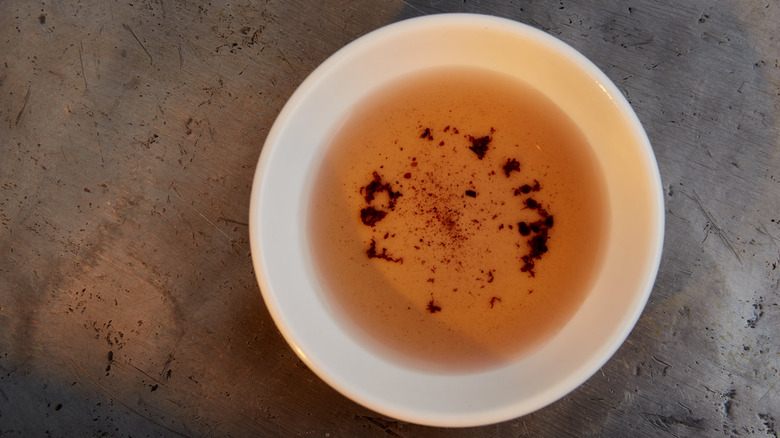Does Red Wine Vinegar Ever Go Bad?
Red wine vinegar, with its distinctively puckery scent and flavor, is one of the most underrated condiments in the kitchen, lending a pleasantly fruity acidity to sandwiches, salads (and homemade salad dressings), and even your Thanksgiving turkey. If you've ever found an old bottle haunting the back of your pantry like a watery red ghost, you might be wondering if it was still safe to use.
There is good news: Red wine vinegar, because of its fermentation and acidity, doesn't actually "spoil" the way perishables do, so you can use up your bottle until the very last drop, even years after you first opened it. Red wine vinegar has a pH of 3, making it one of the most acidic food products on the scale (a quick pH primer: the scale ranges from 0 — battery acid, to 14, which is the most "basic" or non-acidic/alkaline rating). This gives red wine vinegar strong antimicrobial power to keep bacteria from festering and spreading, even once the bottle is opened and the liquid within is exposed to the air.
Tips for storing red wine vinegar
While red wine vinegar does last a very long time — nearly or actually indefinitely — its quality can disintegrate over the years if stored improperly or carelessly. Unlike some other condiments, red wine vinegar does not need to be refrigerated, so you don't have to clear out a spot in your fridge for it. It does need to be kept cool, in an area without major temperature fluctuations (nix keeping it above or near your stove), and it does best in a dark environment, so keeping it in your pantry is ideal.
It is also best for the liquid to stay in the bottle in which it came, but if you have to transfer it, a glass airtight container (like a mason jar) is best, as oxygen can seep through plastic and have adverse effects on the quality of the vinegar — this is known as oxidation. Actually, every time you open the lid to it, your red wine vinegar oxidizes a little bit more as it's exposed to the air, so be sure to screw the cap back on tight as soon as you're done using it.
When to get rid of your red wine vinegar
Bearing in mind that red wine vinegar doesn't spoil or become unsafe to consume, it can reach a point where the flavor is so compromised that it would affect how the dish you use it in will taste — which no one wants. One sign that your vinegar is past its prime is that it has changed from the ruby red of its finer days to a darkened, almost rust-colored hue (or it could go in the opposite direction and lighten).
There is also the appearance of sediment at the bottom of the bottle. While this is totally normal as the red wine vinegar ages, it can be indicative of loss of quality and flavor. There is also the possibility that your red wine vinegar could develop what is known as a mother. This is a combination of bacteria and yeast that forms into a gelatinous sheet or disc. It can be used to make your own red wine vinegar at home, but if you'd rather not, and you find the presence of the mother unappetizing, you can throw it out and open a new bottle.


